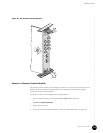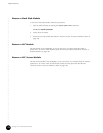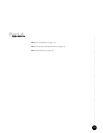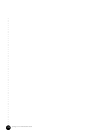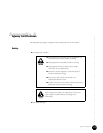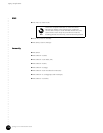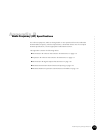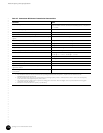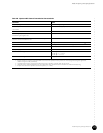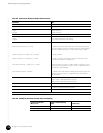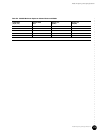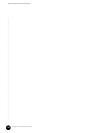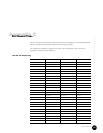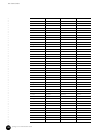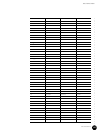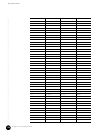
•
•
•
•
•
•
•
•
•
•
•
•
•
•
•
•
•
•
•
•
•
•
•
•
•
•
•
•
•
•
•
•
•
•
•
•
•
•
•
•
•
•
•
•
•
•
•
•
•
•
•
•
•
•
•
•
•
•
Radio Frequency (RF) Specifications
177
Radio Frequency (RF) Specifications
Table 48: Upstream RF Channel Transmission Characteristics
Parameter Value
Frequency range 5 to 42 MHz edge to edge
Transit delay from the most distant CM to the nearest
CM or CMTS
<= 0.800 msec (typically much less)
Carrier-to-noise ratio Not less than 25 dB
Carrier-to-ingress power (the sum of discrete and
broadband ingress signals) ratio
Not less than 25 dB
2
Carrier- to-interference (the sum of noise, distortion, common-path
distortion and cross-modulation) ratio
Not less than 25 dB
Carrier hum modulation Not greater than -23 dBc (7.0%)
Burst noise Not longer than 10 msec at a 1 kHz average rate for most cases
3,4,5
Amplitude ripple 5-42 MHz: 0.5 dB/MHz
Group delay ripple 5-42 MHz: 200 ns/MHz
Micro-reflections -- single echo -10 dBc @ <= 0.5 m sec
-20 dBc @ <= 1.0 m sec
-30 dBc @ > 1.0 m sec
Seasonal and diurnal signal level variation Not greater than 8 dB min to max
1. Transmission is from the CM output at the customer location to the headend.
2. Ingress avoidance or tolerance techniques MAY be used to ensure operation in the presence of time-varying discrete ingress signals that
could be as high as 0 dBc [CableLabs1].
3. Amplitude and frequency characteristics sufficiently strong to partially or wholly mask the data carrier.
4. CableLabs report containing distribution of return-path burst noise measurements and measurement method is forthcoming.
5. Impulse noise levels more prevalent at lower frequencies (< 15 MHz).



